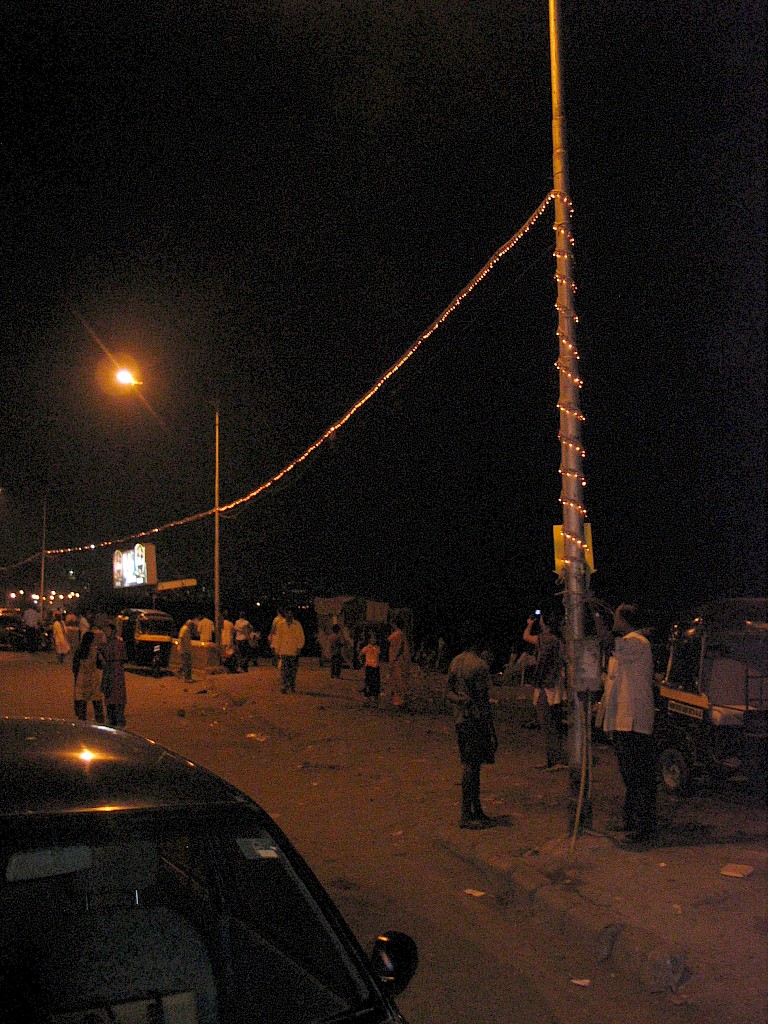



For this work, Sukumaran links the slum to the middle class area with this half-kilometre line of moving lights controlled by a button either end. A standard decorator's "chaser" box is modified, and its usual light-elements arranged end-to-end, so that the resulting line is over 400 metres long. The signal travels at about 100 Kmph from one neighbourhood to another, through 40-foot lines of 6w bulbs. A switch at either end is connected to the light control, and sends a single "pixel" of light down to the other side. If there is someone at the other end, they can send it back.
The project saw a number of interactions. After a point children figured out a way of blocking the other pole from flashing a signal. The project became a dynamic and playful medium for inter-personal expression through the use of electricity. In the words of the artist, the work deals “explicitly, and perhaps literally with ideas of distance, insulation and the act of refusal, or blockage.”
This also helps the artist question relationships between people and what he terms ‘embedded technologies’ in our daily existence. He proposes ways of imagining a “radical redistribution of electricity”, for instance leaking it across property boundaries and placing switches on the street that have various poetic and practical effects. The project highlighted the use of an old and over-familiar technology like electricity operates within contemporary socio-economic systems. In a city such as Mumbai, where the same infrastructure is shared by everyone from industrialist billionaires to slum-dwelling migrant workers, Sukumar’s project also helps highlight the inequalities of electricity distribution and usage, and what that shows about the city’s socio-political structures and their futures.
This work was also part of a series of similar works Sukumaran made in Mumbai, including those that revealed the origin of electric supply as private or state owned or those designed to highlight and make uncanny the act of switching off or on. The Carter Road project is perhaps the most successful of the series of electricity-based projects by Sukumaran because of the lasting effect it has had on the Carter Road promenade. The reaction to the work inspired local area management association, Bandra West Residents Associations (BWRA), to consider the promenade as a host to other public art installations and events. Since then, the promenade has seen installations by contemporary artists, local NGOs promoting multiple issues and has become a venue for varying events.
This work is part of Sukumaran's practice that deals with the use of 'embedded technologies' such as electricity in contemporary times. In a series of installations, Sukumaran worked to create an information system, database as well as interactions between communities using electricity.
All copyright belongs to Shanghai Academy of Fine Arts, Shanghai University.

